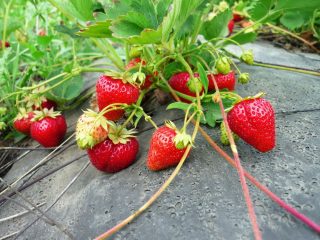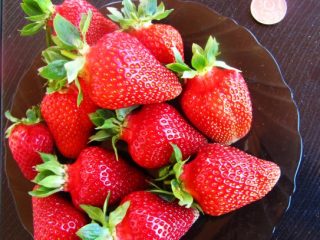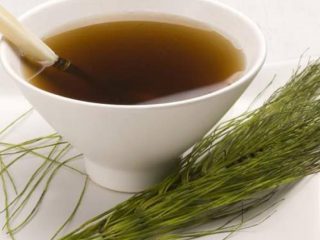Content
It is possible to obtain a high-quality harvest of any crop only by observing certain agricultural technology requirements. Garden strawberries are no exception.
To enjoy aromatic and tasty berries, you need to make an effort. Strawberries are responsive to care; gardeners note high yields with rhythmic adherence to care rules. One of the important points is feeding. Today we will look at the types of fertilizers for garden strawberries during the flowering period. It is this period of life of strawberry bushes that many gardeners miss from their nutritional schedule.
There is a misconception that if the strawberry bushes have bloomed, then now the plant will cope on its own. And all further care consists of watering, weeding, removing excess tendrils and loosening. Feeding strawberry beds is carried out at the beginning growing season and in the autumn to prepare the bushes for wintering.
But the plant needs nutrients and minerals throughout its entire life. The soil supply of these substances is not enough to grow strawberries in one place for many years. And at the time of flowering and fruit formation, the bushes will need additional components.However, some gardeners are wondering whether it is possible to fertilize when strawberries are blooming? Will there be any harm to the berries from additional fertilizing, since they absorb all the fertilizers applied to the garden?
Fertilizing strawberries definitely needed during flowering. It can significantly increase productivity and improve the quality of berries. They become larger, juicier and more aromatic. It is these qualities that gardeners value in varietal strawberries.
The following bushes need to be fed during the flowering period:
- only planted;
- already bearing fruit.
The main stages of fertilizing strawberries:
- at the beginning of the vegetative process;
- at the moment of flowering;
- after the end of fruiting.
What is the importance of feeding strawberry bushes at the time of flowering? It provides several important parameters:
- Strawberries will recover well after the winter period.
- There will be more flower stalks and ovaries on the bushes, because the plant has enough strength for this.
- All fruits that have set will not fall off, because the bushes will have enough nutritional components for their development.
The importance of the procedure is clear to us, now it remains to find out how to feed strawberries during flowering.
Choosing compositions for fertilizing strawberries during flowering
The method and type of fertilizing should be determined depending on the composition of the soil on the strawberry beds. Most often, farmers feed bushes with mineral fertilizer compositions, which are easily absorbed by the plant’s root system. But there are also traditional methods - wood ash, chicken droppings, boric acid or yeast. At this stage, strawberries need potassium, so the choice of fertilizers is based on the presence of the desired element in them.
There are only two main types of fertilizing - root and foliar.Let's look at each type of feeding in more detail. But first, let’s find out what general rules exist for feeding the crop at the time of flowering. This time usually falls in May - early June. Before starting the spring procedure, you need to make some preparations:
- we clean the bushes from dried parts;
- remove the layer of mulch around the plant, if any;
- delete weeds;
- loosen the soil (for root application of components).
This is necessary to free the roots of the plant, to improve access to light and air, and to increase the number of ovaries on the strawberry bushes.
Root fertilization
This is a convenient way to feed strawberry bushes, which is familiar to every gardener. A nutrient solution is applied to the soil so that the necessary substances flow through the root system to all parts of the plant.
We feed the bushes carefully. It is necessary to ensure that the composition does not fall on the leaves, but is evenly applied to the soil. For this purpose it is good to use:
- Potassium nitrate. To prepare a fertilizing solution, one teaspoon of the substance per bucket of clean water is enough. One bush will require 0.5 liters of the finished composition.
- The drug "Ovary". The preparation of the solution is carried out strictly according to the instructions attached to the drug. Overdose is not allowed.
- Yeast. Gardeners use fresh and dry yeast for feeding strawberries at the moment of flowering. Consumption of the nutrient composition is 5 liters per 10 garden strawberry bushes. Preparation of a solution from fresh - 1 kg of yeast per 5 liters of clean water. Then the resulting mixture is diluted again with water in a ratio of 1:20. Water the strawberry bushes with ready-made fertilizer. Dry yeast One sachet is enough to prepare sourdough.Add sugar, warm water and let it brew for 2 hours. Then pour 0.5 liters of starter into a watering can and feed the berries.
- Bread (wheat or rye). Capable of replacing the yeast composition completely. Dried pieces of bread are poured with water and left to ferment. This may take from 6 to 10 days. As soon as the composition “ferments”, it is squeezed out or filtered. Then dilute with clean water in a ratio of 1:10 and water the strawberry bushes. Consumption per plant – 0.5 liters of infusion.
- Wood ash. An excellent natural remedy. It is very popular among gardeners. Pour 1 liter of boiling water over a glass of the substance, stir and let cool. Then strain and use 0.5 liters of infusion to feed one garden strawberry bush at the time of flowering.
- Mullein (infusion). Take 2.5 kg of manure and pour 10 liters of water, leave for 24 hours. Then mix the infusion and dilute with water in a ratio of 1:20. To get rid of the unpleasant odor, experienced gardeners recommend immediately adding Baikal humate to the composition (before infusion). For one strawberry bush you will need 0.5 liters of fertilizer.
Foliar application
This method consists of irrigating strawberry bushes with nutritional compounds.
Beneficial substances are absorbed by the leaf mass, especially their lower part. This must be taken into account when spraying plants. Foliar feeding is carried out during the period of mass appearance of flowers on strawberries. To do this, gardeners often use:
- Ready-made mineral fertilizer compositions. The preparations “Rubin”, “Gera”, “Agros” have proven themselves to be excellent for feeding strawberries at the time of flowering.How to prepare the solution is detailed on the packaging; adhere to the recommended dosages.
- Zinc sulfate. A 0.02% solution is being prepared for spraying strawberries.
- Potassium nitrate also suitable for foliar spraying. You need to take a teaspoon of the drug per 5 liters of water and treat the strawberry bushes.
- Yeast. The recipe for preparing the solution is the same as for root application.
- Fresh nettle infusion. Finely chop the herb, put it in a bucket and add hot water (50°C). Infuse for 24 hours, then dilute with water in a ratio of 1:10 and foliar fertilize the strawberries at the time of flowering.
- Boric acid (pharmacy drug). A small pinch of powder is enough for a bucket of water. Mix the mixture and spray the strawberries.
- Fermented milk products (kefir, whey). They bring not only nutritional benefits, but also contribute to soil acidification. This is important for gardeners who have alkaline soil on their property. The second advantage of this feeding is that ticks and aphids do not like it. The products are diluted with water (1:1) and strawberries are fed. The composition also has a drawback. It cannot provide adequate nutrition to strawberries during their flowering period. Therefore, you will have to add treatment with infusion of nettle, mullein or bird droppings.
- Complex composition. For this feeding you will need several components. They are diluted in 10 liters of water and foliar sprayed. You need to take 2 grams of potassium sulfate and potassium permanganate, 1 gram of boric acid and a bag of any complex fertilizers for garden strawberries.
Useful tips
Natural formulations are, of course, very popular.
They are affordable, easy to make yourself, and such solutions are environmentally friendly.
Fertilize at the time of flowering using one of the methods and the selected composition. Find the best one for your site. All recipes are given for selection and not for simultaneous use.
Apply organic fertilizers only in a diluted state. Strawberries love feeding with natural organic matter, but an overdose will lead to dire consequences.
At the time of root feeding, the soil should be moist. It is best if you feed the strawberries after the next watering or rain.
Foliar application is done in dry sunny weather, but not on a hot afternoon.
Any feeding will not cause stress to the plant if you do it in the evening or early in the morning before the heat sets in.
Standard dosages are designed for sandy loam and light loamy soil. Conduct a soil analysis of your site to choose the most appropriate fertilizer for strawberries at the time of flowering.
By properly feeding, you will significantly improve the condition of the strawberry bushes and the yield. You will help the berries become more beautiful, tastier and more aromatic. This result will cover all the time spent.
Conclusion
Feeding garden strawberries at the time of flowering is an important measure to increase the yield.
But be sure to follow the rules for fertilizing so as not to harm the plants.
The most basic rule is reasonable expediency. You should not be zealous and increase the proportions or amount of fertilizing of strawberries during the flowering period. One procedure is enough at the moment the flower stalks appear. Otherwise, you may disrupt the natural acid-base balance of the soil, which will affect the development of strawberries. It is better to prevent an overdose of nutritional components than to cope with it.













